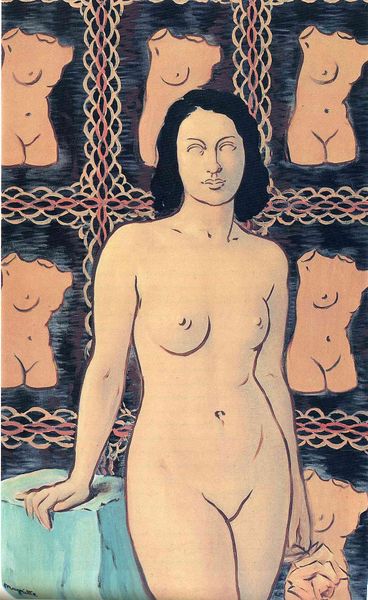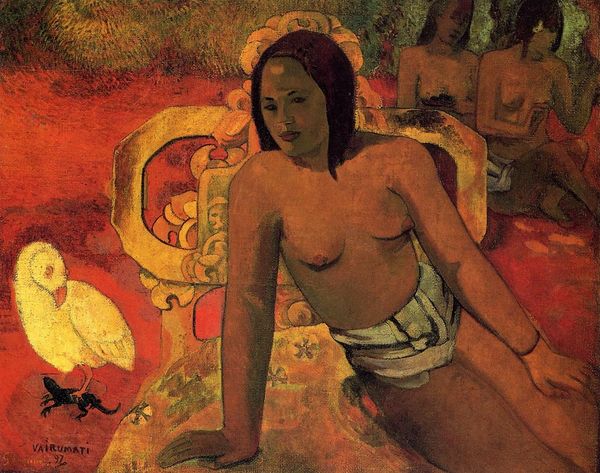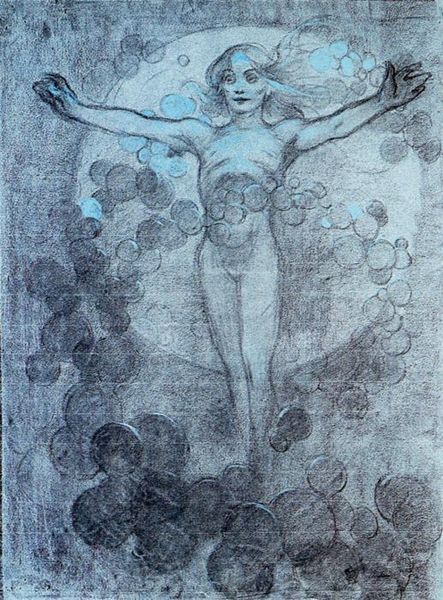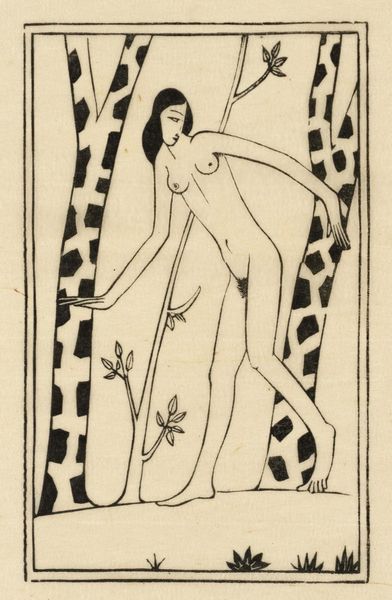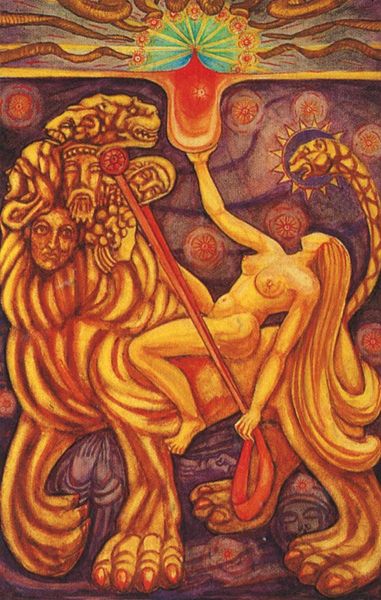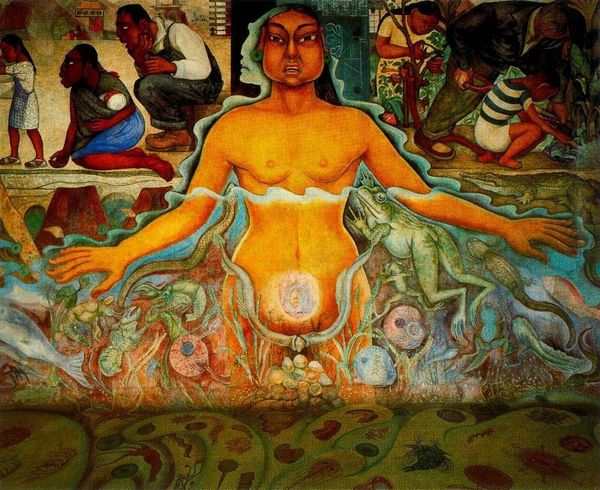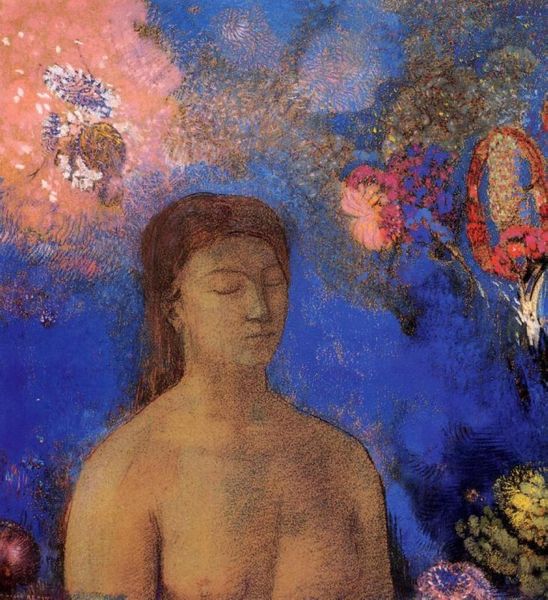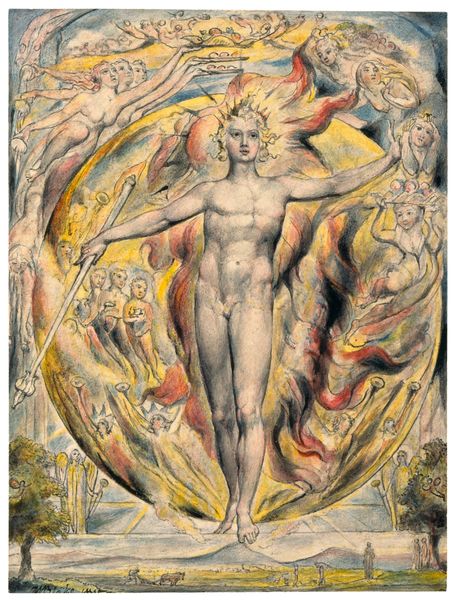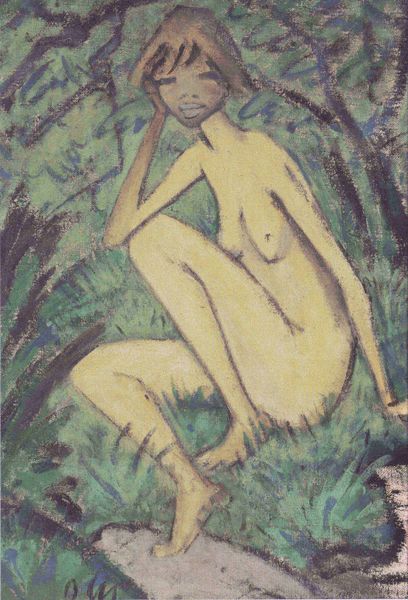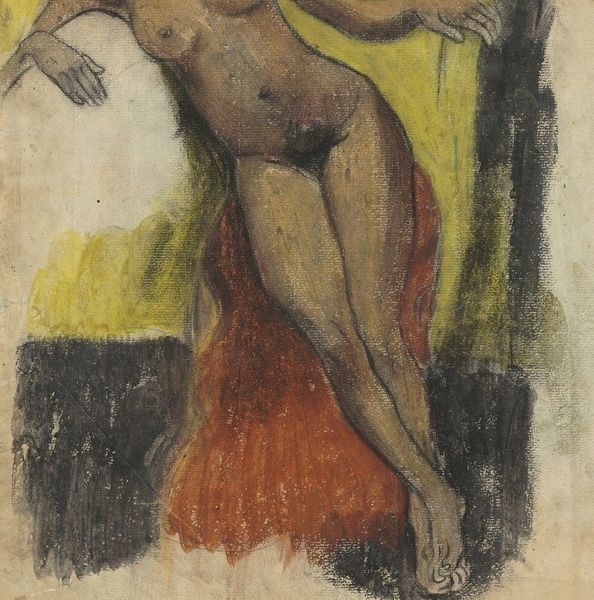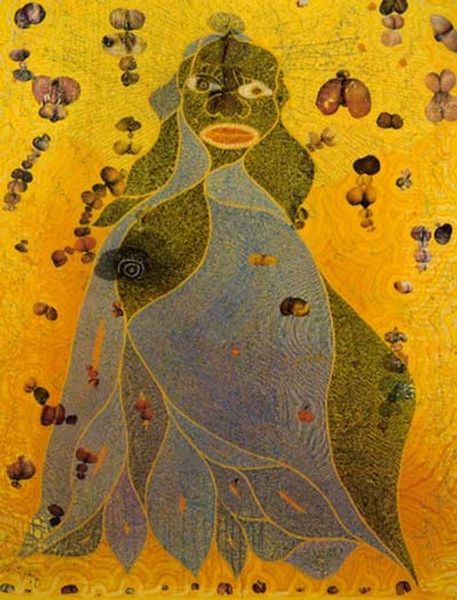
painting, plein-air, watercolor
#
painting
#
plein-air
#
landscape
#
figuration
#
oil painting
#
watercolor
#
female-nude
#
orientalism
#
symbolism
#
post-impressionism
Copyright: Public domain
Paul Gauguin painted Tahitian Eve, now in the Musée de Grenoble, using watercolor. Here, the symbolic weight of the fruit offered by Eve is as potent as in any Renaissance depiction. The gesture of offering, laden with implication, echoes through art history—from classical depictions of Venus offering the apple to Paris, to countless Christian renderings of the temptation in Eden. This singular act encapsulates desire, transgression, and the loss of innocence. Consider the way this motif recurs—the hand outstretched, the fruit presented—in works by artists across vastly different cultures and eras. It’s not merely a literal representation but a deeply embedded cultural memory, a primal scene re-enacted through art. The psychological impact remains constant: a moment of choice, heavy with consequence. It speaks to a collective, subconscious understanding of human fallibility and longing, resonating with viewers on an instinctive level. The offering is an emotional force, an invitation to partake in a shared human drama. The symbol of the offering is not static but evolves, reflecting changing cultural values and anxieties. Yet, its core message—the allure and peril of temptation—remains a potent thread connecting us to our artistic forebears.
Comments
No comments
Be the first to comment and join the conversation on the ultimate creative platform.

